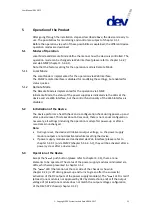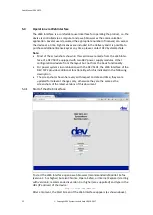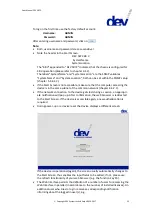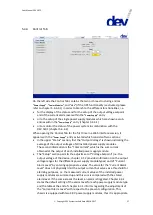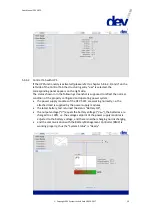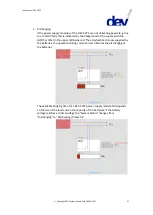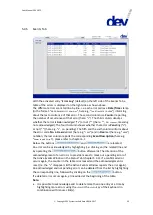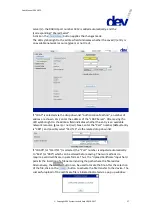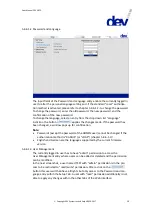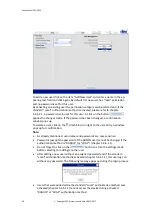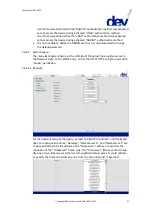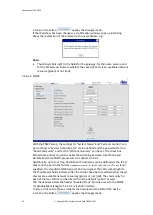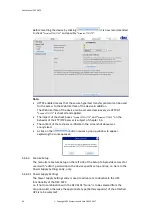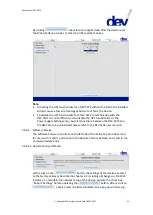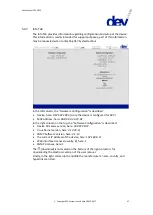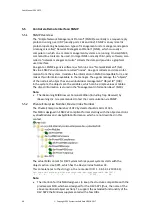
User Manual DEV 5072
Copyright DEV Systemtechnik GmbH 2016-2017
33
5.4.5
Events Tab
With the activated entry "
Error Log
" (default) on the left side of the Events Tab, a
table of the errors is displayed on the right side as shown above.
The different errors are listed line-by-line, i.e. each error carries a
Date/Time
stamp
(in the format: "
DDD DD MMM YYYY hh:mm:ss
", here e.g. "
Tue 07 Jun 2016 10:40:36
") informing
about the last occurrence of that error. The second column is a
Count
er reporting
the number of occurrences of that error (here: "
1
"). The third column denotes
whether that error is
Ack.
nowledged ("
X
") or not ("
") (here: "
", i.e.
<space>
, meaning
not acknowledged). The fourth column shows whether that error is
Pend.
ing ("
X
")
or not ("
") (here e.g. "
X
", i.e. pending). The fifth and the sixth columns inform about
the error code
No.
in
Hex
adecimal (here e.g. "
1302
") and in
Dec
imal (here e.g. "
4866
")
notation; the last column reports the corresponding
Event Description
(here e.g.
"
Power Supply 2 Error
"), please refer to chapter 6.1.
Below, the buttons
and
are located:
An error can be acknowledged by highlighting (i.e. clicking on) the related line and
by operating the
button afterwards. The intention of the
acknowledgement of an error is to provide means to mask out a pending error of
the Active Events Window in the Status Tab (chapter 5.4.3). If a confirmed error
occurs again, the counter in the table is increased and the acknowledgement is
reset (i.e. the "
X
" disappears & the Active Events Window reports the error again).
An acknowledged and not pending error can be deleted from the list by highlighting
the corresponding line, followed by clicking on the
button.
If a deleted error occurs again, a line added at the beginning of the table.
Note:
It is possible to acknowledge and to delete more than one entry at a time by
highlighting more errors using the
<Ctrl>
or the
<Shift>
key of the keyboard in
combination with mouse click(s).



